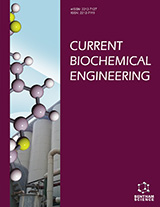Abstract
Background: In the long run, synthetic tints were found to be harmful to the chemicals. As a result natural tints have come to be used for their many intrinsic values. The main reason being, then availability of local plants as the main source of natural colorants. Their easy availability in the country being zero cost – effective and planted for other purposes are the main reasons for utilizing them as natural tints. Almost all the parts of the plants, namely stem, leaves, fruits, seeds, barks etc. are used for extracting natural colour. In addition, they are antimicrobial antifungal, insect – repellant deodorant, disinfectant having medicinal values.
Methods: Sweet Indrajao leaves were cleaned by washing with water and dried under direct sunlight and ground as fine powder. A fine strainer was used to remove the wastages. After all these processes, 1-kilogram leaves weighed 318 grams. Then, it is put in 75% ethanol 25% water and heated in a breaker which in kept over a water bath for 2 hours. After this, the contents were filtered and kept in a separate beaker. Bleached fleece draperies stained with stain extract were made to become wet and put into different stain baths which contain the required amount of stain extract and water. Acetic acid was added to it after 20 minutes. The fleece drapery was stained for about one hour at 60°C. The draperies thus stained were removed, squeezed, and put to treatment with metal salts without washing. Different metal salts were used for the treatment using 3% of any one of the chemical mordants like alum, stannous chloride, potassium dichromate, ferrous sulphate, nickel sulphate, copper sulphate and natural mordants such as myrobolan, turmeric, cow dung, Banana sap juice at 60°C for 30 minutes with MLR of 1:30. The stained draperies were washed repeatedly in all the three methods in water and dried in air. At last, the stained draperies were put to soap with soap solution at 60°C for 10 minutes. The draperies were repeatedly washed in water and dried under the sun.
Results: Sweet Indrajao leaves discharged colour easily in alcoholic water. The fleece draperies were stained with chemical and natural mordants. It was observed that the stain uptake was found to be good in post-mordanting method. Ultrasonication has clearly improved the stainability of the draperies at pH 3 and 3.5 values. The pH decreases the stain ability under both Conventional and Ultrasonic conditions. The colour strength increases with an increase in staining temperature in both cases of US and CH methods.
Conclusion: Sweet Indrajao.L has been found to have good ultrasonic potential as a stain plant. The stain uptake as well as the fastness properties of the fleece drapery were found to enhance when metal mordant was used in conjugation with ultra-sonication for the extract of Sweet Indrajao. It was also found that the enhancement of staining ability was better without mordant draperies. The dye extract showed good antibacterial activity against the three bacterial pathogens. Among the three bacterial pathogens, dye extract showed more effective against Escherichia coli pathogens and dye extract showed more effective against Aspergillus pathogens. Hence, the ultrasonic method of drapery staining may be appropriate and beneficial for society at large in future.
Keywords: Sweet Indrajao, stain, fleece, wool, natural dyes, ultrasonication.
Graphical Abstract
 6
6

















